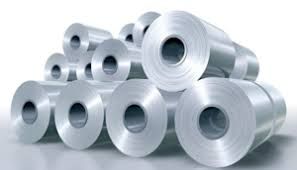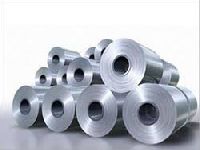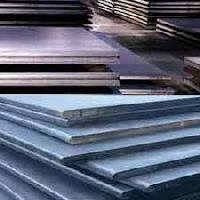
Hot Rolled Steel Coils
Hot Rolling is a metalworking process that occurs above the re-crystallization temperature of the material. After the grains deform during processing, they re-crystallize, which maintaining an equated microstructure and preventing the metalworking process from hardening. The starting material is usually large pieces of metal, like semi-finished casting products, such as slabs, blooms and billets. If these products came from a continuous casting operation the products are usually fed directly into the rolling mills at the proper temperature. In smaller operations, the material is at room temperature and must be heated. This is done in a gas or oil-fired soaking pit for larger work pieces; and for smaller work pieces induction-heating is used. As the material is worked the temperature must be monitored to make sure it remains above the re-crystallization temperature. To maintain a safety factor a finishing temperature is defined above the re-crystallization temperature; this is usually 50 to 100 ?(122 to 212 ?) above the re-crystallization temperature. If the temperature drops, the material must be re-heated before hot rolling.
...more
Cold Rolled Steel Coils
A cold rolled steel sheet is produced by pickling a hot coil and rolling it uniformly at an appropriated temperature to a thinner thickness. It has excellent surface configuration and superb mechanical properties for use in automobile and electronic appliance production.
...more
Cold Rolled Coils
A cold rolled steel sheet is produced by pickling a hot coil and rolling it uniformly at an appropriated temperature to a thinner thickness. It has excellent surface configuration and superb mechanical properties for use in automobile and electronic appliance production.
...more
Boiler Quality Plates
BOLIER QUALITY STEEL PLATES is a metalworking process that occurs above the re-crystallization temperature of the material. After the grains deform during processing, they re-crystallize, which maintaining an equated microstructure and preventing the metalworking process from hardening. The starting material is usually large pieces of metal, like semi-finished casting products, such as slabs, blooms and billets. If these products came from a continuous casting operation the products are usually fed directly into the rolling mills at the proper temperature. In smaller operations, the material is at room temperature and must be heated. This is done in a gas or oil-fired soaking pit for larger work pieces; and for smaller work pieces induction-heating is used. As the material is worked the temperature must be monitored to make sure it remains above the re-crystallization temperature. To maintain a safety factor a finishing temperature is defined above the re-crystallization temperature; this is usually 50 to 100 ?(122 to 212 ?) above the re-crystallization temperature. If the temperature drops, the material must be re-heated before hot rolling.
...more
Pulses
Be first to Rate
Rate This